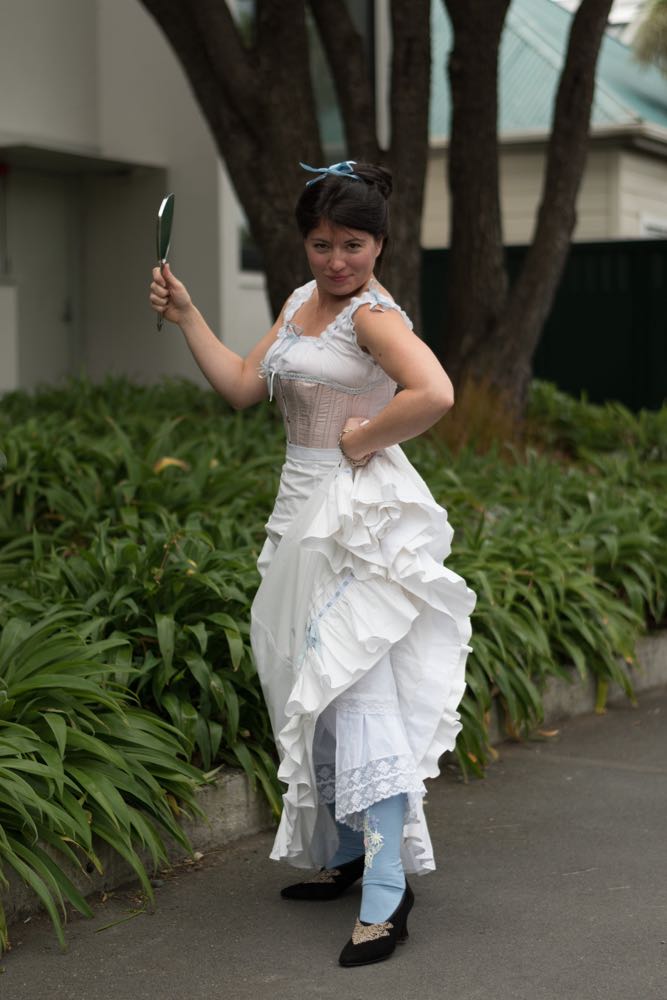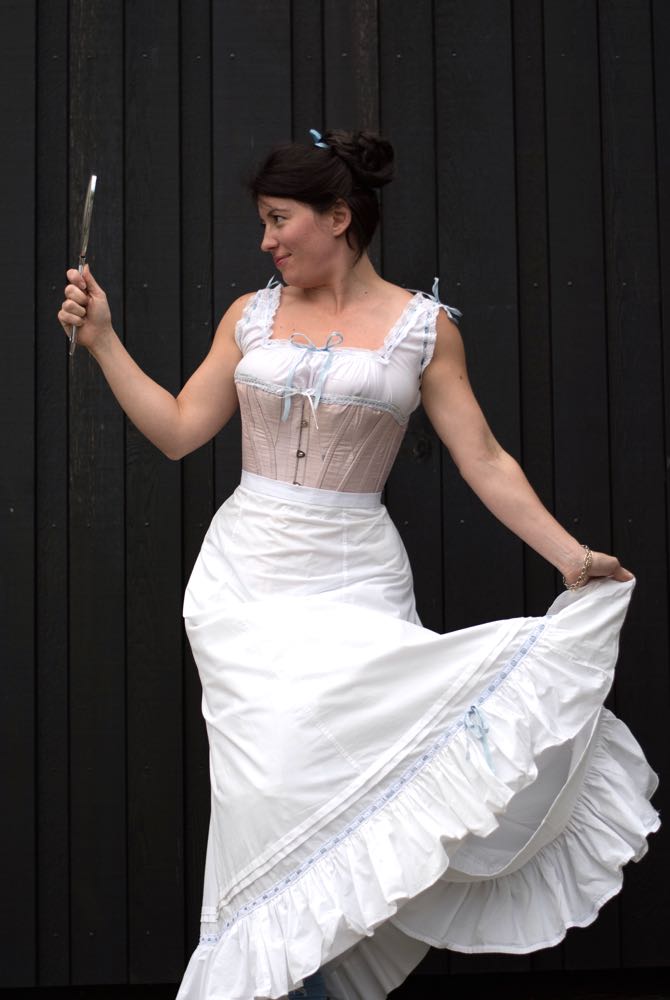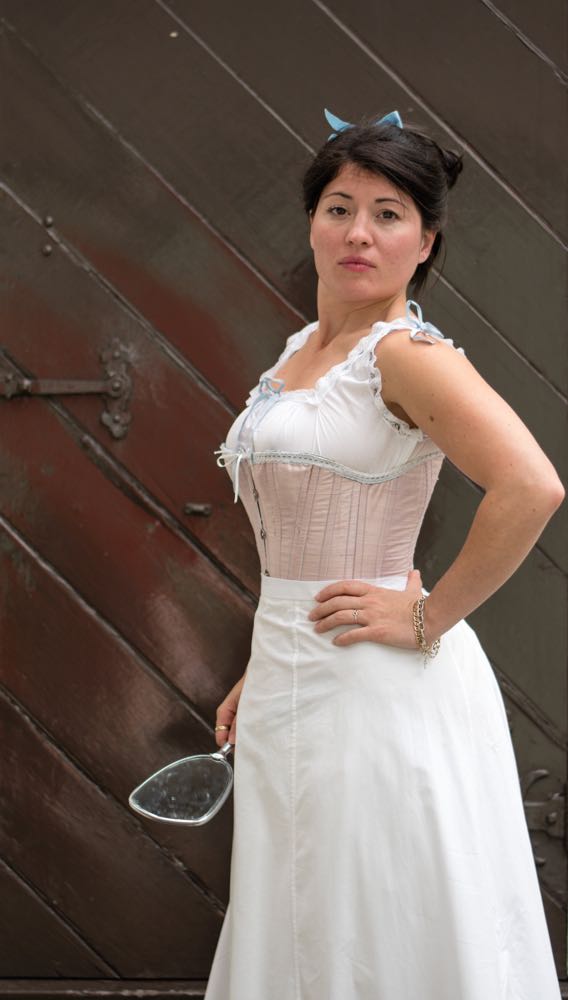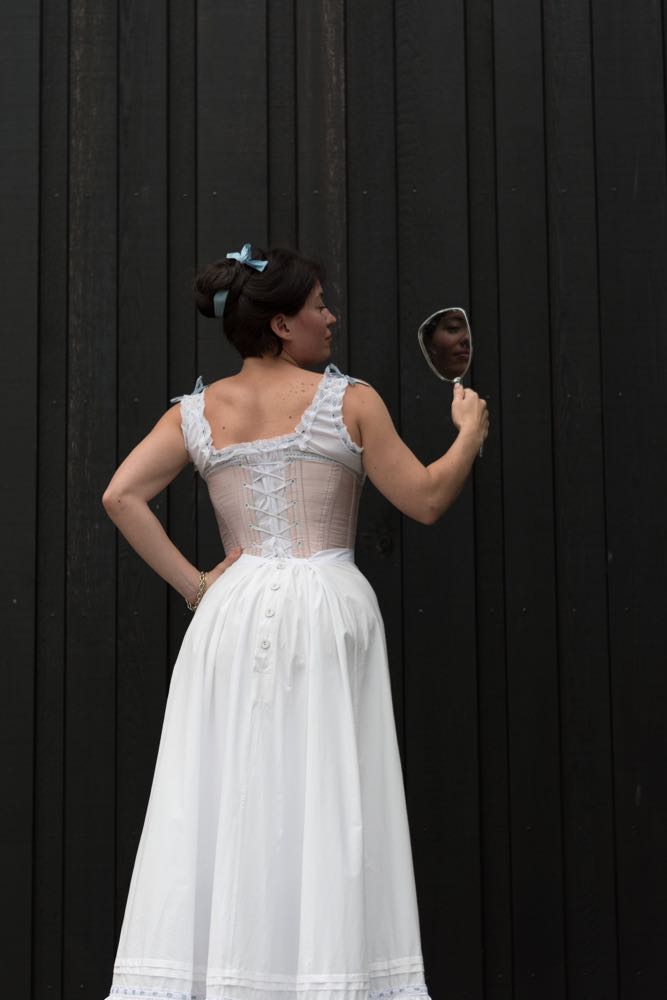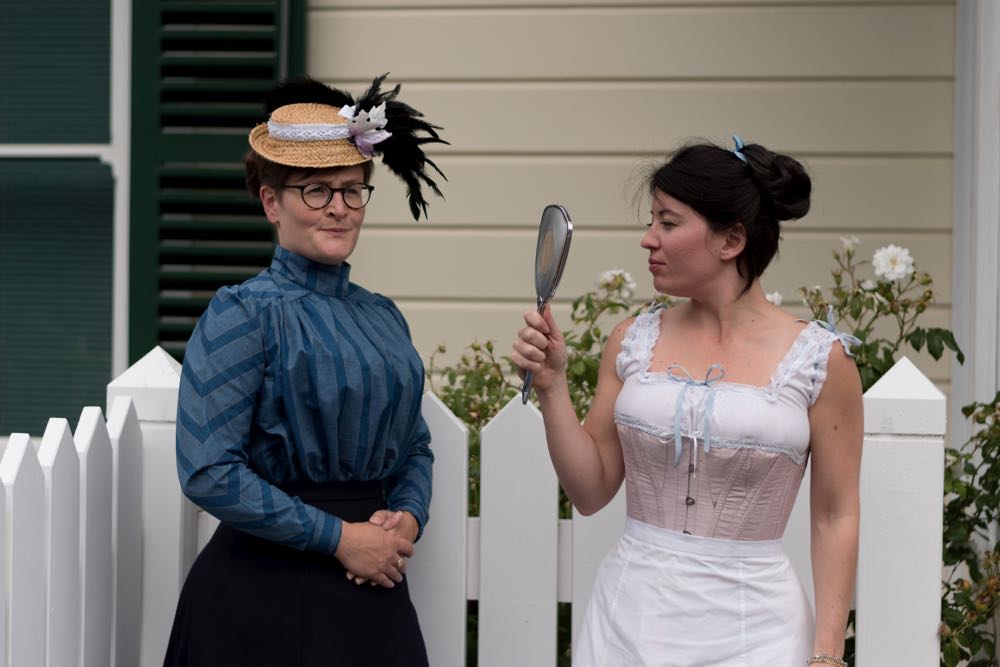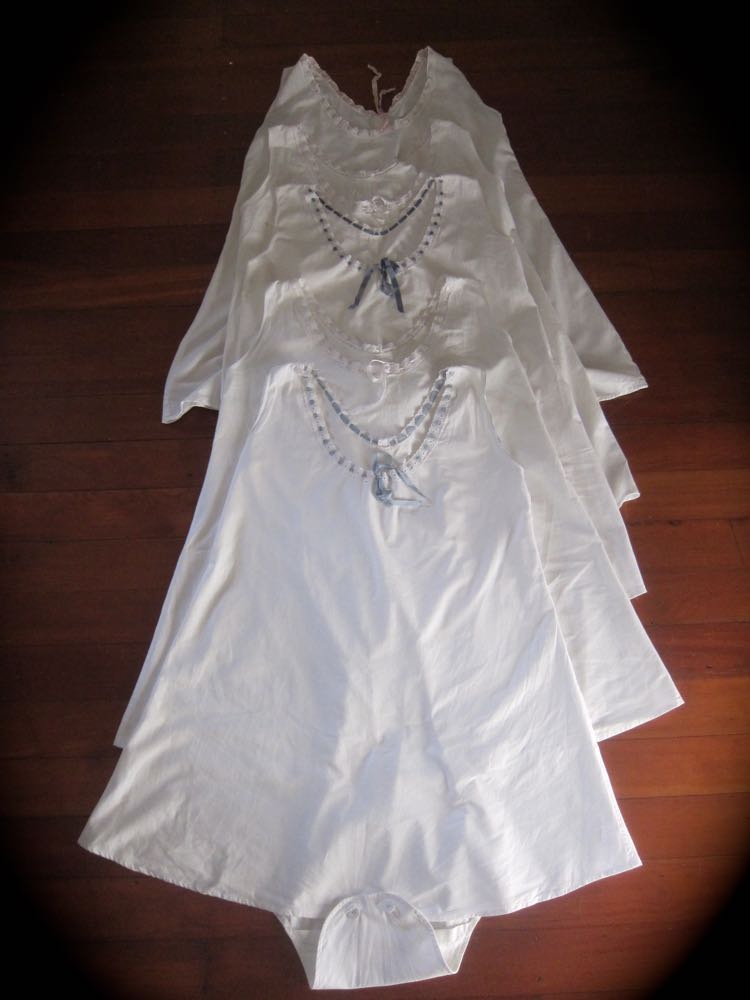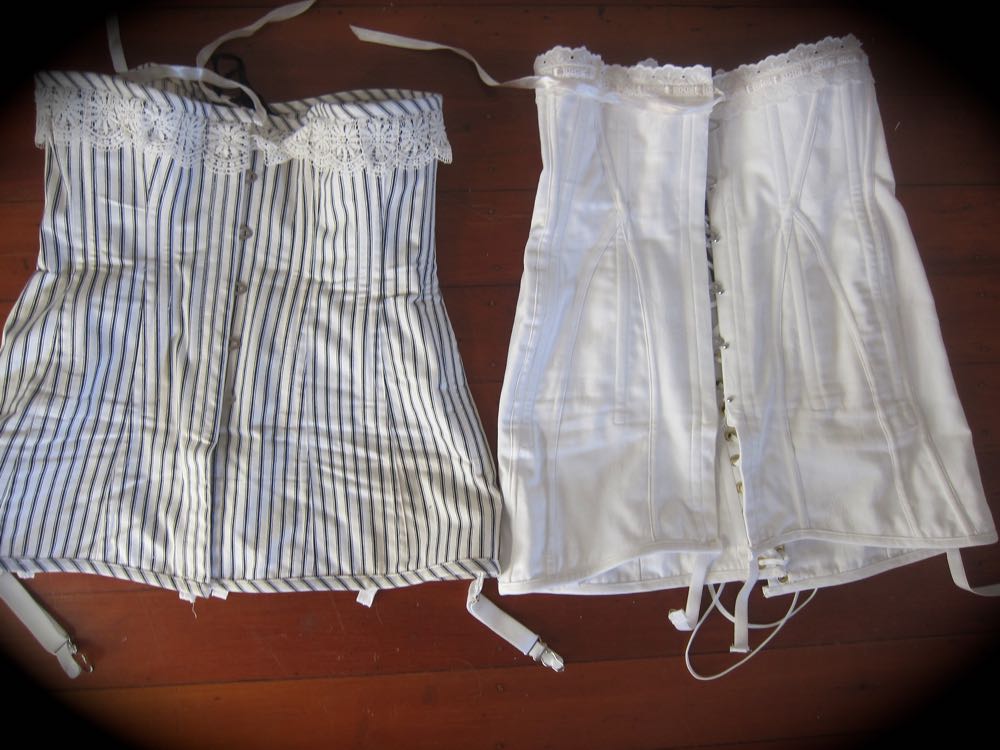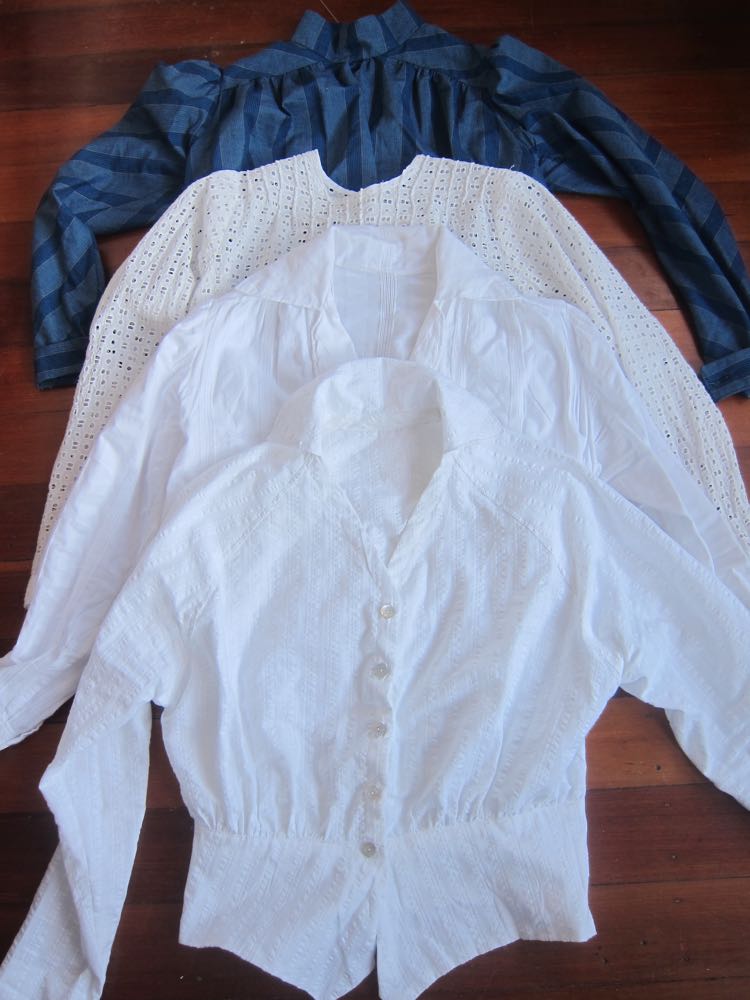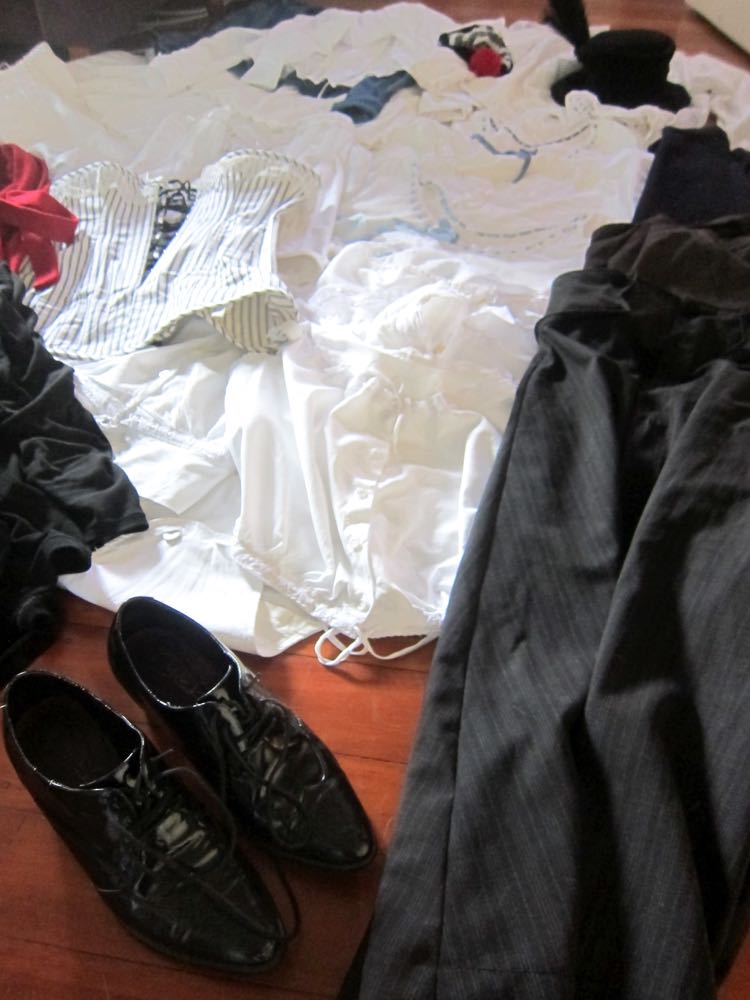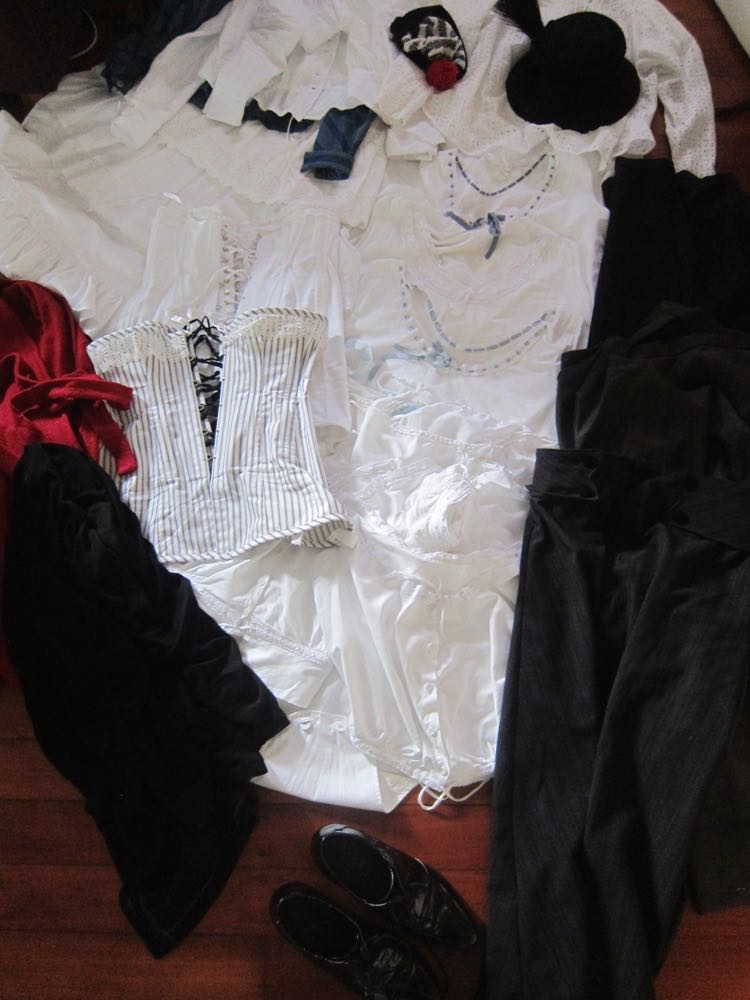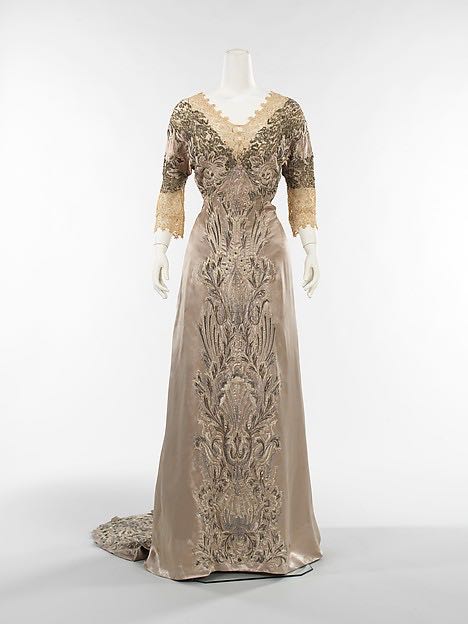I am buried under piles of ruffles (literally – having spent most of the day hemming and ruffling 12 meters of silk organza for a travelling petticoat for Ninon, only to decide in the end I didn’t like the way it looked…) getting ready for Costume College, so I’m pulling out a fun costume pretties post that I’ve had stashed in case of emergency (aka: when I decide I really need a new dress, and have only two days in which to sew it…)
This is ‘Priscilla’ in the outfit she wore as a model for the Ruffles to Rebellion talk.
Priscilla claims that she’s no good at posing, but I think she’s a natural in front of the camera.
Doesn’t she look just adorable in the outfit? (she joked that she agreed to model just so that she had an excuse to wear nothing but underwear to church!)
B doesn’t approve!
This is my favourite photo of the series – it absolutely captures Priscilla’s personality:
(photos by the fantastic Facundo, who is always looking for new models and events, if you’re in Wellington and looking for a photographer

